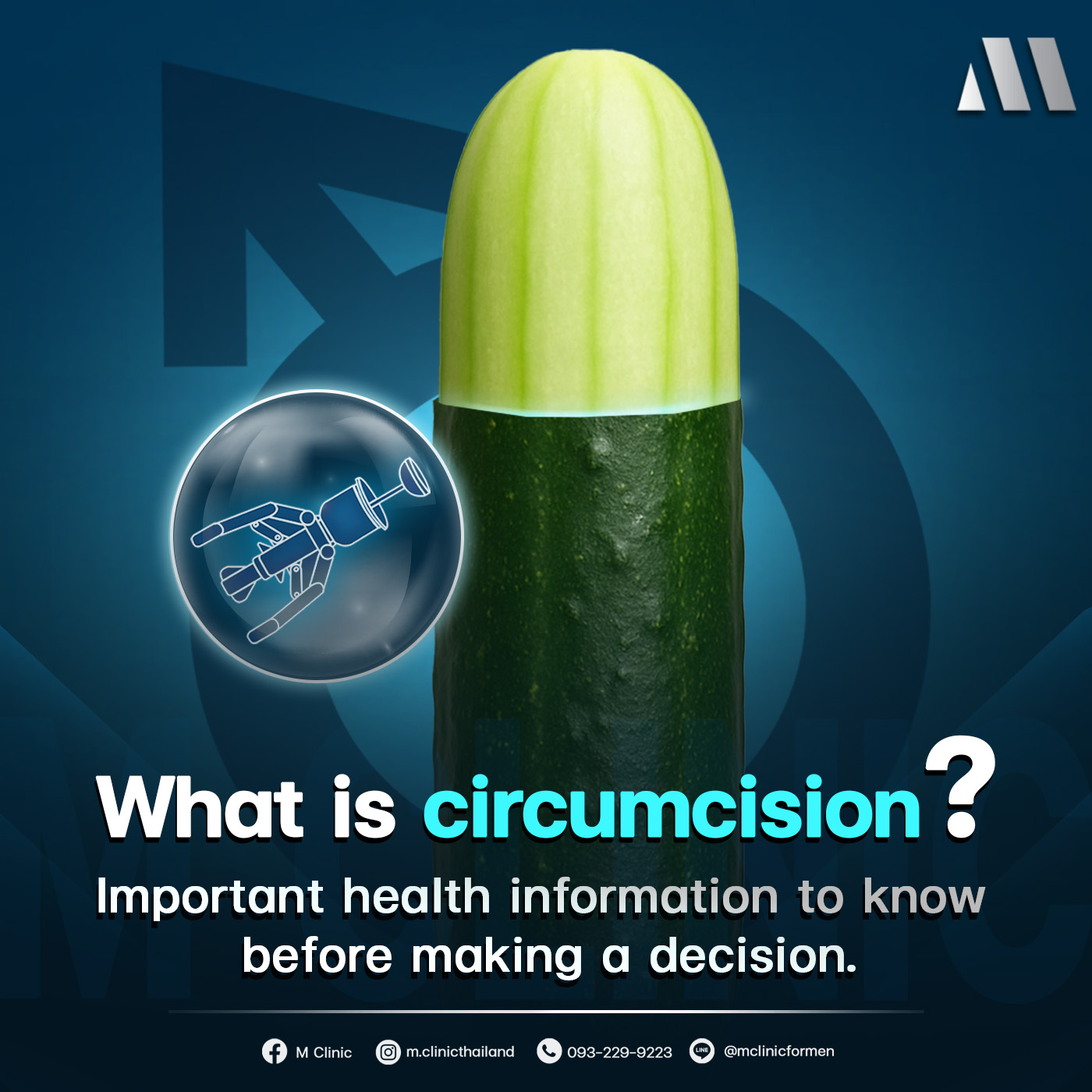What is circumcision? Important health information to know before making a decision.
What is circumcision?
Circumcision is a medical procedure that involves removing part or all of the foreskin covering the head of the penis. Generally, circumcision can be performed at various ages, including infancy, childhood, adolescence, or adulthood, depending on personal reasons or medical recommendations.
In many cultures around the world, circumcision is regarded as a traditional or ceremonial practice with deep historical roots. But from a medical perspective, circumcision is usually recommended for health problems like phimosis or repeated infections of the genital area that do not respond to non-surgical treatments.
Circumcision is a minor surgical procedure that is performed with local anesthesia and requires a short recovery time. However, it must be properly managed under experienced medical professionals to avoid complications.
What are the medical reasons for circumcision?
Although many people are familiar with circumcision as a tradition or culture, there are also medical reasons why doctors may recommend it in specific cases, especially in individuals with the following penile conditions:
1. Tight foreskin that can’t be pulled back or Phimosis
Phimosis is a condition in which the foreskin cannot be retracted normally. This may cause discomfort during urination or even sexual activity. A tightly closed foreskin can also trap bacteria and debris, leading to repeated infections or chronic inflammation.
2. Chronic glans inflammation or Balanitis
Recurring inflammation of the glans can occur in some men, especially if cleanliness in that area is not properly taken care of. Circumcision may be an option to help decrease the accumulation of debris and bacteria, which are factors that can trigger inflammation.
3. Reduce the risk of Urinary Tract Infection (UTI)
Several medical reports indicate that male infants who are not circumcised have a higher risk of urinary tract infections (UTI) in their first year than circumcised infants. However, this risk generally decreases as they grow older.
4. Helps make hygiene care easier
For some men, circumcision helps make genital hygiene easier and more effective, reducing the accumulation of bacteria and secretions that can cause unpleasant smells or long-term inflammation.
Circumcision’s health and hygiene benefits
Circumcision is not intended as a treatment for diseases but can improve overall health in various aspects, especially in individuals with certain risk factors. Common benefits of circumcision include:
Helps make genital cleaning easier and more thorough: Especially in men with a long foreskin or who tend to have moisture buildup in the area, which can make thorough cleaning difficult.
Reduces buildup of germs and bacteria: Without the foreskin, bacterial accumulation is lowered and this helps to prevent unpleasant smells or irritation.
Reduces risk of certain infections: Some research reports that circumcision may help reduce the risk of some sexually transmitted infections (such as HPV and HIV), especially where infection rates are high. However, further research on this topic is still ongoing.
Reduces the frequency of inflammation: Especially in men who have had past inflammation or repeated infections.
Note: The benefits mentioned here are general information and do not guarantee that circumcision provides full protection against infections or health issues. Decisions should be based on medical advice.
Who should consider getting circumcised?
Circumcision can be performed on both children and adults. Although it offers various benefits, it may not be suitable for everyone. In some cases, circumcision may be considered an appropriate option. The decision should be based on physical health, personal reasons, and individual suitability. For example, infants whose parents choose circumcision based on religious beliefs or family cultural traditions.
Adult men who suffer from foreskin-related issues such as phimosis, infections, or chronic inflammation.
Individuals who have difficulties maintaining hygiene, suffer from chronic inflammation of the glans, or have a history of recurrent infections.
Individuals who have consulted a doctor and been advised that circumcision may be a suitable option based on their personal health.
Steps of circumcision and ways to recover afterward.
Generally, circumcision is a minor procedure that is quick to perform and has a short recovery time. However, it should be performed by experienced medical professionals. The main steps are as follows:
1. Pre-circumcision health assessment: The doctor performs an initial physical check-up, asks about any drug allergies, existing medical conditions, and evaluates the suitability of the patient for circumcision.
2. Use of anesthesia: For adults, local anesthesia is typically used to prevent pain during the procedure, while sedation may be applied for children as appropriate.
3. Foreskin Excision: The foreskin is removed using specialized instruments or techniques depending on the patient’s age. On average, the process takes about 30 to 60 minutes.
4. Suturing or Wound Sealing: The wound may be closed using absorbable sutures or other materials that don’t require removal, depending on the surgical method.
5. Follow-Up Care and Recovery After Surgery: After the surgery, the doctor will provide instructions on wound care, medication use, and recovery time. Normally, the wound begins to dry within 5–7 days and completely heals within 2–4 weeks, but recovery time may be longer depending on the individual’s health.
Self-care after circumcision
Appropriate care after circumcision is an important step that helps the wound heal faster and lowers the risk of complications, including:
รักษาความสะอาดแผลตามคำแนะนำของแพทย์ โดยล้างแผลเบา ๆ ด้วยน้ำสะอาด หลีกเลี่ยงการใช้สบู่หรือสารที่อาจระคายเคือง
Keep the wound clean according to the doctor’s instructions by gently washing with clean water and avoiding soaps or substances that may cause irritation.
Avoid strenuous activities, bumps, and long periods of standing or sitting to prevent friction. Wear loose-fitting underwear, and avoid applying pressure on the wound area.
Temporarily refrain from sexual activity until the wound is completely healed, giving it sufficient time to recover. Usually, this takes about 2 to 4 weeks.
Carefully observe any abnormal symptoms such as excessive swelling, severe redness, pus formation, fever, intense pain, or unusual bleeding. Please see a doctor right away.
Things to know and possible precautions that may occur
Even though circumcision is a minor surgical procedure, it still carries risks similar to other surgeries, such as:
Delayed healing of the wound or infection.
Swelling, redness, or bruising around the wound area.
Asymmetry of the tissue that may occur.
Sensory issues in some cases, such as tightness, discomfort around the glans, irritation, or sensitivity during the early recovery phase.
To ensure safety, circumcision should be performed under the care of an experienced medical team. Selecting a healthcare facility with high standards and proper wound care can greatly reduce these risks.
Circumcision should be an informed decision.
Circumcision is a medical procedure that should be considered with accurate information and based on professional medical advice. For some, it can serve as a helpful option for improved health and hygiene, but it is not necessary for everyone.
If you have questions or are considering whether circumcision is suitable for you, consulting with a medical professional for a comprehensive evaluation will help you make a confident and safe decision.

